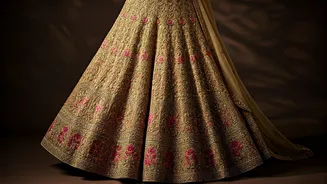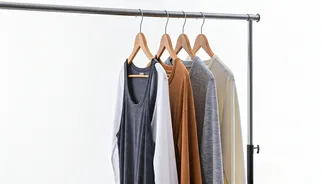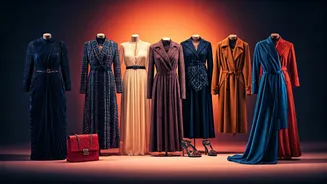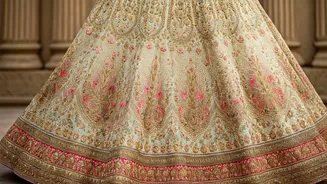Layering Like a Pro
Mastering the art of layering is the cornerstone of stylish winter dressing. Start with a thin base layer, like a thermal top or a fitted long-sleeve shirt,
which will trap heat close to your body. Next, add an insulating layer, such as a fleece or a sweater. This layer will provide the warmth needed for those chilly days. Finally, top it off with an outer layer, like a coat or jacket. Consider different materials and textures for a diverse look. Experiment with a wool coat for a classic vibe, a puffer jacket for extra warmth, or a stylish parka for those rainy winter days. Don't underestimate the power of accessories. Scarves, hats, and gloves can add not only warmth but also a layer of style to any outfit. Vary the lengths and textures, playing with combinations that feel comfortable and look great together.
Embrace Rich Hues
Winter is a perfect season to incorporate rich, deep colors into your wardrobe. Embrace jewel tones like emerald green, sapphire blue, and ruby red. These colors add a touch of luxury and sophistication to any outfit. Also consider incorporating warmer tones such as mustard yellow, burnt orange, or deep burgundy. These shades not only look great but also evoke a sense of coziness and warmth, aligning perfectly with the winter season. Neutral colors such as charcoal gray, navy, and cream can serve as the backbone of your winter wardrobe. They work well as base colors for coats, sweaters, or pants, allowing you to easily mix and match with bolder color choices. These neutral colors act as great canvases for creating a harmonious and balanced look. Remember, the key is to balance darker shades with lighter ones to ensure your outfit has depth and visual appeal.
Invest in Quality Outerwear
Your outerwear is often the first thing people notice, so invest in quality pieces that provide both warmth and style. A well-fitted wool coat is a classic choice, offering elegance and durability. Choose a style that complements your personal style and body shape. A classic trench coat can also be a versatile piece, suitable for milder winter days. Select coats made of high-quality materials, such as wool, cashmere blends, or down-filled jackets, to ensure warmth and longevity. Also consider waterproof or water-resistant options, which will keep you dry during snowy or rainy weather. Pay attention to the details such as the quality of the stitching, the type of lining, and the closures. Small details can make a big difference in the overall appearance and function of your coat. Properly caring for your outerwear will extend its lifespan. Follow the care instructions and store your coats in a cool, dry place.
Accessorize Wisely
Accessories can transform a basic winter outfit into a statement ensemble. Scarves, hats, and gloves aren't just practical; they're essential for enhancing your style. A chunky knit scarf can add texture and warmth, instantly elevating a simple coat. Choose scarves in various materials, from wool to cashmere, to match your needs and preferences. Hats are another crucial accessory. A beanie can add a sporty vibe, while a felt hat can add a touch of sophistication. Gloves can bring both warmth and personality. Leather gloves look elegant, while knit gloves can add a touch of coziness. Belts are also a great way to define your waist and add visual interest. Cinch a coat with a belt to create a more defined silhouette or use a decorative belt to add a pop of color or texture to your look. Accessories offer you the chance to experiment with textures, colors, and patterns, enabling you to add personality to your outfits and stay stylish throughout the winter months.
Footwear Choices Matter
Winter footwear should be stylish and functional, offering warmth and protection. Boots are the most common choice during winter. Invest in quality boots made of waterproof materials such as leather or suede, with insulated linings to keep your feet warm and dry. Different boot styles suit various outfits. Ankle boots can be paired with jeans or skirts, while knee-high boots work great with dresses or leggings. Consider options with a good grip to prevent slips on icy surfaces. Apart from boots, other types of footwear can be useful during winter. Consider wearing weather-resistant sneakers or sturdy walking shoes on dry days. Ensure that your footwear matches the weather conditions and your activities. It's also important to maintain your footwear. Clean and treat your shoes to protect them from the elements and extend their lifespan. Footwear serves as a fundamental part of the overall look, providing a crucial blend of style, comfort, and protection during winter.












